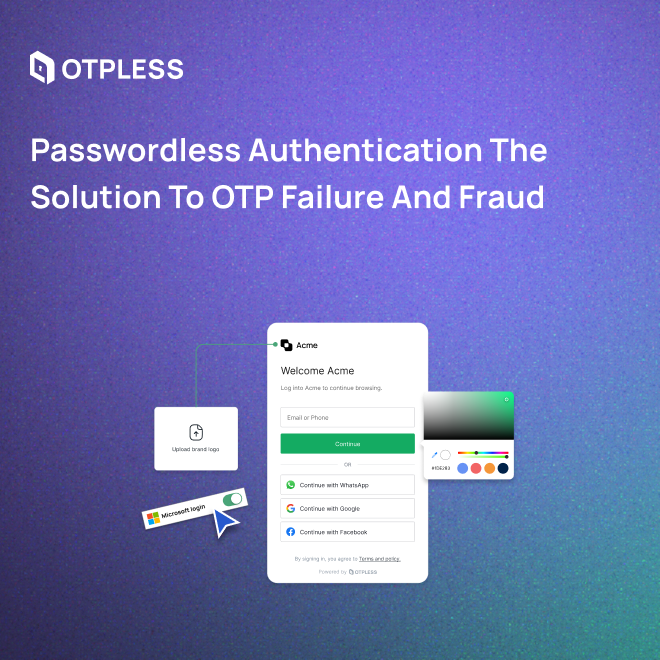Introduction
Passwords have long been the standard method of authentication for online accounts, but their limitations and vulnerabilities have become increasingly apparent. One-Time Password (OTP) authentication has emerged as a popular alternative, but it is not without its own issues. OTPLESS authentication offers a solution to the problems of both passwords and OTP, providing a more secure and reliable way to authenticate users.
The Risks of OTP Authentication
One of the biggest issues with OTP authentication is the risk of fraud. OTPs are typically sent via SMS or email, and these channels can be vulnerable to attacks such as SIM swapping and email hacking. Fraudsters can intercept OTPs and use them to gain access to user accounts, even if they don’t have the user’s password. OTPLESS authentication eliminates this risk by using a more secure channel – the user’s phone number.
How OTPLESS Authentication Works
OTPLESS authentication works by sending a notification to the user’s phone via a messaging app such as WhatsApp. The user simply has to click a link to confirm their identity, without the need for a password or OTP. This method of authentication is much more secure than SMS or email, as messaging apps are encrypted and protected against interception.
The Reliability and Convenience of OTPLESS Authentication
Another problem with OTP authentication is the risk of failure. Users may not receive the OTP, or it may expire before they can enter it. This can lead to frustration and a loss of trust in the service. OTPLESS authentication eliminates this problem by providing a more reliable method of verification. Users are much more likely to receive a message on their WhatsApp than an OTP via SMS or email.
OTPLESS authentication also offers a better user experience. With passwords and OTPs, users are required to remember and enter a code each time they log in. This can be time-consuming and frustrating, especially if the user has multiple accounts. OTPLESS authentication streamlines the process, allowing users to log in with just a few taps on their phones. This makes the authentication process much faster and more convenient, leading to higher user satisfaction and engagement.
Personalization with OTPLESS Authentication
In addition to these benefits, OTPLESS authentication also provides a more personalized user experience. By using messaging apps such as WhatsApp, businesses can interact with users in a more conversational and engaging way. They can send personalized messages and offers based on the user’s behavior and preferences, leading to a more personalized and relevant experience.
Conclusion
Overall, OTPLESS authentication offers a number of benefits over passwords and OTPs. It provides a more secure and reliable method of authentication, while also improving the user experience and offering more personalized interactions. Businesses that implement OTPLESS authentication can expect to see higher user satisfaction, engagement, and loyalty, while also reducing the risk of fraud and failed logins.

